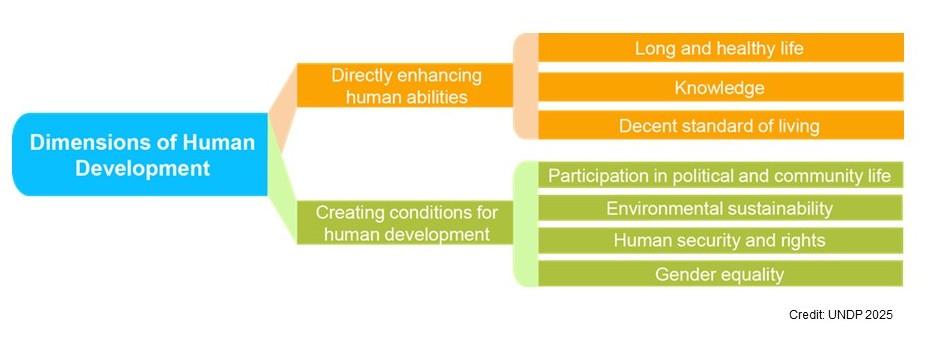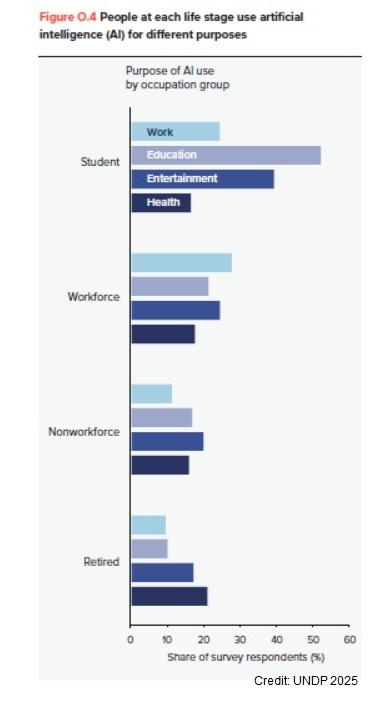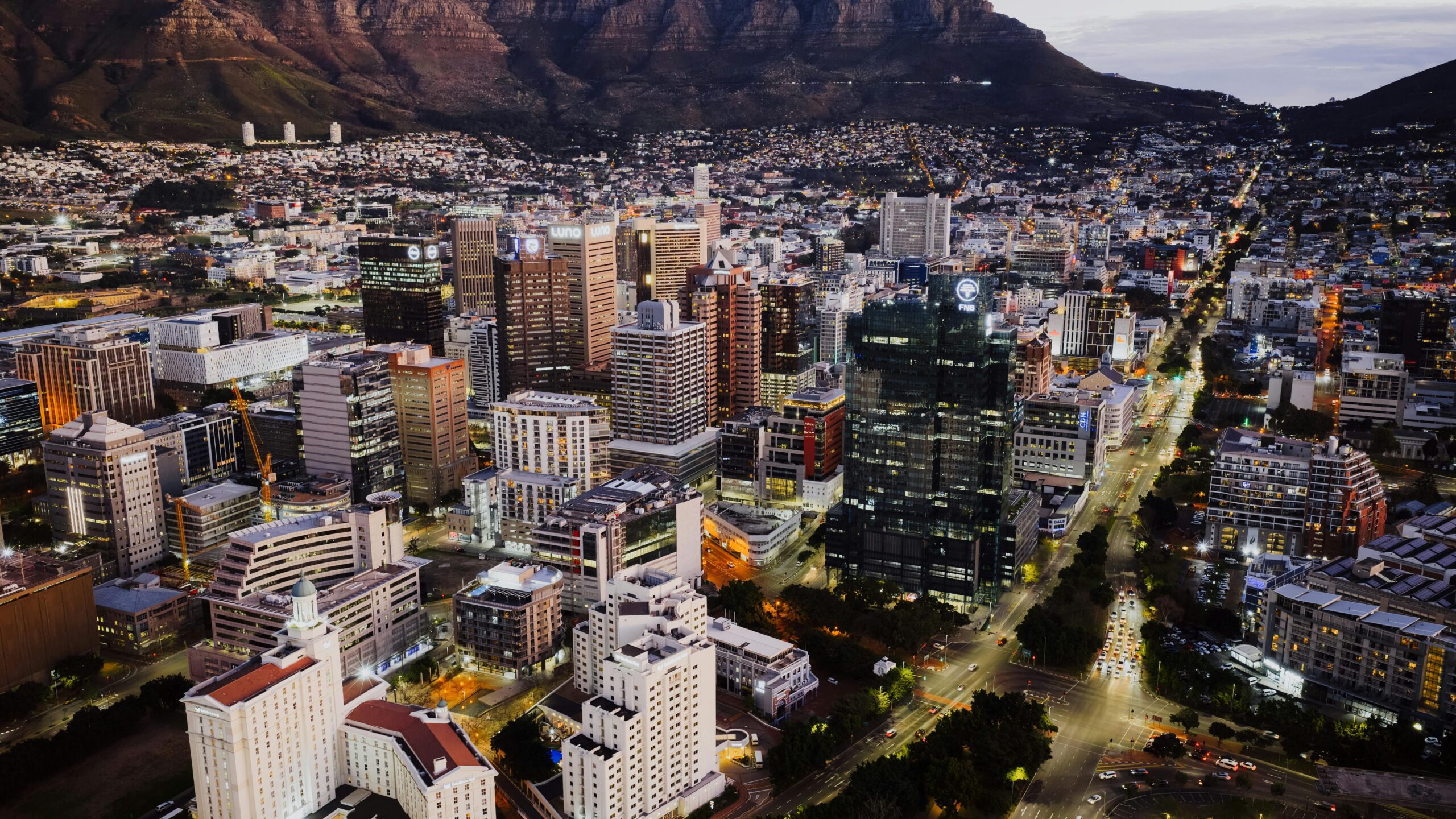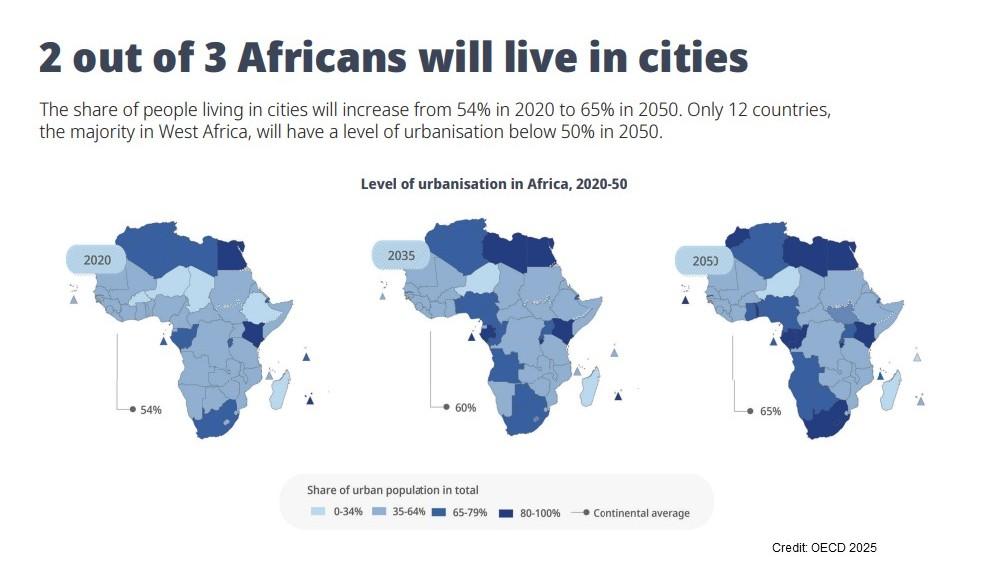Sustainability TLDR Newsletter: Edition 35
This newsletter gives you highlights of selected sustainability insights that were, perhaps, too long (you) didn’t read (TLDR) or there’s just too much out there to read. The highlights presented cover insights gleaned from a global, regional (African), and national (Kenyan) perspective. Happy reading!
GLOBAL
Human Development Report 2025

Publised by the United Nations Development Programme (UNDP), this report focuses on People and Possibilities in the Age of AI – as a matter of choice.
I must admit that I was initially taken aback by the Age of AI part as I was thinking more about human development i.e. process of enlarging choices for people so that they can live lives they value. This goes beyond economic/income, which is only one measure of development, to include other critical human development priorities that are health, education and decent standards of living.

Yet when you think of the context of human development i.e. access to opportunities, choices, creating conditions and enhancing abilities – well, then the Age of AI makes a lot of sense.
There is a lot to read and consider in this report, so I will highlight a few insights for your consideration:
-
Globally, human development is stalling, the gap between rich and poor countries continues to grow and what used to be traditional development pathways are now squeezed by global pressures such as emissions, pollution, conflict, e.t.c.
-
While AI does have transformative potential, it is also exacerbating inequalities – especially when human agency is disregarded. AI is also reshaping societies and economies faster than institutions can adapt meaning policy and safeguards for people are far behind.
-
As the report highlights, making AI work for people is a matter of choice. People shouldn’t be competing with AI, but rather AI can provide complementarity to what people do, including labour-wise.
-
Innovation will need to be intentional to ensure it keeps people at the centre, and not as an after-thought e.g. integrate human agency into design, so that people keep the capacity to make choices, control their actions and environment, abilities to influence their own lives, e.t.c. Social accountability must be at the forefront of technology and the age of AI.
-
According to the report, a decade and a half ago, despair (life dissatisfaction) among young people started shooting up. Before this, old and young were pretty satisfied with life and this was the normal trend; but that changed fast especially in high human development countries. The reasons for this are complex and evolving, but it seems there’s a correlation between digital technologies and the plummet in mental wellbeing of young people.

-
Developing countries in Africa and South Asia face the largest digital divides and human development gaps. But AI can enable human development towards education, healthcare, and skills if investment and people are prioritized.
-
High human development countries in Europe and North America worry about their freedoms and employment opportunities in the age of AI despite leading in AI infrastructure and innovation.
-
Other parts of Asia and Latin America are seeking to leverage AI in their industrialization agendas and public service delivery. With Middle Eastern countries exploring smart infrastructure.
My two cents: I think this report talks to what many have been thinking (worrying) about…the place of humanity in the Age of AI. Human progress and/or development, is not simply an economic or technological measure. It is and needs to remain about (the majority of) development of people – creating and enabling the conditions for people to shape their lives and the future responsibly and positively for their and humanity’s wellbeing.
AFRICA
Africa’s Urbanisation Dynamics 2025

This publication from the OECD (Organisation for Economic Co-operation and Development) earlier this year gives extensive insights into Africa’s urban population and spatial expansion in the coming decades. For reference, the OECD is an inter-governmental organization of 38 of the world’s richest countries, with a collective population of approx. 1.4 billion people. This report is published in partnership with African Development Bank (AfDB), United Nations Office for Project Services (UNOPS)‑Cities Alliance and United Cities and Local Governments of Africa (UCLG) Africa.
The African continent with its 54 countries, will undergo its fastest urbanization in the coming decades and urban population will double across the continent in the next 25 years to reach 1.4 billion Africans living in urban areas in 2050.
While it seems inevitable that urbanization will happen, how it happens will be critical. Here are some interesting insights on this from this report:
-
Urban areas will absorb 80% of the continent’s population growth; and two thirds of all Africans will live in these urban areas.
-
In 25 years’ time (2050), 159 cities will be home to populations of 1 million; and about 20 megacities with +10 million people will exist. As a result, urban areas and cities will require a lot of space for housing, infrastructure e.g. roads, sewerage; public services e.g. schools, healthcare, waste management; commerce and industry; transport; and resources e.g. water, clean air, electricity, e.t.c. Urban area expansion is expected to grow faster than urban population growth.
-
Urban planning needs to happen now, if it isn’t happening already. Planning (or lack of it) will impact how urbanization happens, it will impact access to public services, jobs and markets, safety and security, social interaction, connectivity to other areas, and more. Ineffective planning and management of urban expansion will result in environmental and social stress, and service deficits.
- SDG 12 – making cities and human settlements inclusive, safe, resilient and sustainable needs to be integral to local and national planning and development. Local and national governments will need to be innovative and forward-thinking to build and achieve decent, live-able urban areas that can stand and thrive in the contextual reality of changing climate and nature adaptation as well as its impacts.

-
A bold move by governments would be to embrace the reality of informality, recognizing that the majority of Africa’s economy and housing is informal – this could be the key to bold, and innovative sustainable development thinking and action.
-
Africa’s urbanization dynamics calls for governance reform towards decentralization, strong local government institutions with clear legal and financial authority. Additionally, policies need to address land governance, recognize and integrate informal settlements and economies into urban planning.
-
Everything requires money, and so will Africa’s urbanization. Current spending in Africa’s cities is low and doesn’t meet current population needs. Governments will need to take strategic and concerted efforts to steer spending priorities using policy and investment in consulting with the private sector and civil society.
My two-cents: While the report gives an overview of the projected and consolidated dynamics of +50 countries and the mega urban transformation that is coming; what hit me most is the urgency for national and local governments, private sector and civil society to be very real about what our communities and their needs in the coming years and start planning for that reality now.
KENYA
Ksh approx. 7 Billion to Kenyan Counties For Action On Climate Resilience

Kenya’s National Treasury recently disbursed KSh 6.97 billion to the counties under the Financing Locally-Led Climate Action Programme (FLLoCA) to strengthen communities’ capacity to adapt to climate change and build resilience. This second tranche of County Climate Resilience Investment (CCRI) Grants allows counties to operationalize their County Climate Change Action Plans (CCCAPs), addressing vulnerabilities ranging from drought and floods to land degradation. The total grant pool has been provided by: World Bank (IDA Loan): KSh 5.775 billion; KfW (German Development Loan): KSh 1.2 billion; County Government Contributions: KSh 4.24 billion giving a total pool of KSh 11.215 billion available in climate grants for the counties.
Launched in 2021 with support from international partners (above), FLLoCA is Kenya’s first national framework to channel climate finance directly to counties and local communities. It provides conditional grants to counties, tied to performance assessments to safeguard accountability, transparency, and readiness.
In early 2024, National Treasury released the 1st tranche of Ksh 7.3 Billion. According to the National Treasury, + 500 climate resilience sub-projects have been completed, 558 are ongoing, and 1.146 million Kenyans have benefitted, including women, youth, and marginalised groups in 1,137 wards (78.4 per cent) of our 1,450-ward target.
Kenya’s Financing Locally Led Climate Action Programme aims to drive:
-
Decentralise climate action tailoring action to county-specific and community-specific requirements.
-
Increase entrepreneurship and job creation in climate action and climate smart business models.
-
Give clarity to climate governance at county level to enhance opportunities for private sector investment and collaboration.
My two-cents: It’s great to see devolved climate finance to support adaptation and mitigation where it matters more. But more than anything I cannot wait to know what positive impact, outcomes this financing has had on tangible county climate commitments; and learn more on how local private sectors are part of these county project partnerships and climate actions.
